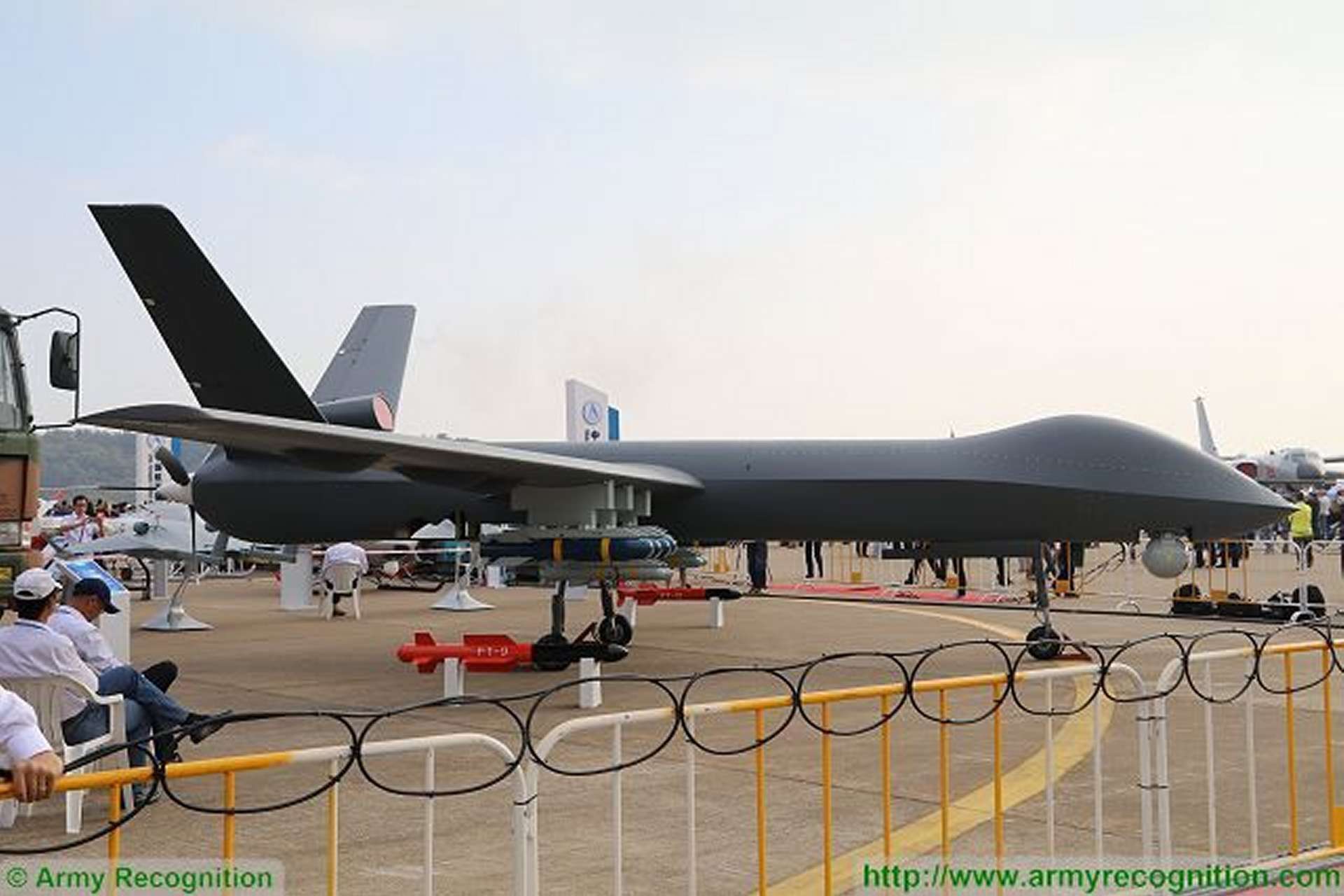Breaking news
Irak boosts Air Capabilities with Chinese CH-5 medium-altitude combat drone.
At the end of April 2024, the Iraqi Air Force marked an important development in its air capabilities with the introduction of the Cai Hong-5 drone, a medium-altitude long-endurance combat aircraft manufactured by the Chinese company CASC. This acquisition is the latest in a series of arms purchases that demonstrate an increasing collaboration between Iraq and China in the defense sector. The CH-5 was officially unveiled during a visit by dignitaries, including Iraq's Defense Minister, at an airbase, marking a significant step in the modernization of the Iraqi arsenal.

Chinese CH-5 medium-altitude combat drone (Picture source: Army Recognition)
The military relationship between China and Iraq strengthened since the fall of Saddam Hussein in 2003, is characterized by significant arms transactions and increased technological cooperation. As Iraq's main arms supplier, China has delivered a variety of military equipment, including armored vehicles such as the Type 59 and Type 85 main battle tanks, WZ-551 troop carriers, artillery systems, and advanced drones like the CH-4 and CH-5. This collaboration also extends to the training of Iraqi troops and technical support for the use and maintenance of these equipments.
This military cooperation is part of a broader strategy where China seeks to extend its influence in the Middle East, a region traditionally dominated by the United States and Europe. The gradual withdrawal of U.S. troops from Iraq has provided China with an opportunity to increase its influence. This is also reflected in the "Belt and Road" initiative, aimed at strengthening economic and strategic ties across Asia, Africa, and Europe. The recent acquisition by Iraq of CH-5 drones underscores increased confidence in Chinese military technology and marks a significant evolution of Iraq's military capability, thus enhancing China's role as a key strategic player in the region.
The CH-5 is considered an important improvement over its predecessors, the CH-3 and CH-4, the latter of which has been in service with the Iraqi Air Force for nearly a decade. This new model stands out for its enhanced capabilities, including a mission endurance of up to 60 hours and the ability to carry various air-to-ground munitions, making it particularly suited for extended surveillance missions and precision strikes.
Although few details have been released about the specifics of the agreement between Iraq and China Aerospace Science and Technology Corporation (CASC), the displayed CH-5 featured six hardpoints for armaments, suggesting a significant payload capacity. These characteristics position the CH-5 as a strategic tool in the fight against terrorism, especially against remnants of the Islamic State which continue to threaten regional security.
This acquisition is part of a broader context of strengthening Iraq's military capabilities, which also includes collaborations with other foreign powers, as evidenced by the presence of Eurofighter Typhoons from the Italian Air Force at the April event. Iraq thus appears determined to diversify its sources of armament and to enhance its air defense capabilities in the face of persistent threats.
The enhancement of Iraq's arsenal with advanced combat drones like the CH-5 also highlights the competitive dynamics between China and the United States in the defense sector, with each country seeking to expand its influence in the region through arms sales and military cooperation. With advanced capabilities and potentially lower costs than Western alternatives, Chinese drones are likely to continue playing a key role in Iraq's defense strategy in the coming years.
Operational since its maiden flight in Gansu province in August 2015, the CH-5 drone, developed by China Aerospace Science and Technology Corporation (CASC), was first publicly displayed at the China International Aviation & Aerospace Exhibition in Zhuhai in 2016. According to available information, the CH-5 falls into the category of medium-altitude long-endurance (MALE) unmanned aerial vehicles (UAVs), with a wingspan of 21 meters and an increased payload capacity of 1,200 kilograms, which is more than that of its predecessors in the Cai Hong family, which had a capacity of 900 kilograms.
This capacity enables this drone, also known as Cai Hong 5 or Rainbow 5, to carry an array of weaponry, including up to 16 air-to-ground munitions such as the Lan Jian 7 (Blue Arrow 7) laser-guided air-to-surface missiles, TG100 laser/INS/GPS-guided bombs, and AR-1/HJ-10 anti-tank guided missiles (ATGMs).
The operational range of the CH-5 extends up to 250 kilometers on a line-of-sight datalink and can be expanded to 2,000 kilometers when utilizing satellite communications, with reports indicating a possible maximum range of 6,500 km. Plans are in place to further increase this range to 10,000 kilometers. Additionally, the maximum flight duration is currently 60 hours, with an objective to increase this to 120 hours, enhancing its capacity for extended missions.
The CH-5 is powered by a 330 horsepower heavy-fuel engine (HFE) which supports up to 60 hours of flight time. This engine provides a loiter speed between 180-220 km/h and a maximum speed exceeding 300 km/h. Alternatively, a 300-horsepower gasoline engine is available, offering up to 39 hours of endurance. The UAV also operates up to a maximum altitude of 30,000 feet (approximately 9,000 meters).
Designed for both domestic and export markets, the CH-5 has garnered international interest due to its relatively lower cost compared to Western drones, with several countries reportedly expressing interest in purchasing it. Furthermore, the UAV is designed for autonomous operations using pre-programmed waypoint navigation and can coordinate with other UAVs in the CH series for joint missions. This feature facilitates easy integration of the CH-5 with existing fleets of the CH-3 and CH-4 drones, utilizing the same control systems and data links, making it a potentially attractive upgrade for existing users of Chinese UAV technology, such as Egypt and Iraq.
This latter capability aligns with China's broader strategic objectives to enhance its indigenous military technologies and expand its influence in the international arms trade. China Aerospace Science and Technology Corporation (CASC) is also pursuing opportunities to export the CH-5 and potentially license its manufacturing technology to other countries, an initiative supported by expressed interest from several nations.


























